Peugeot 308 vs DS Automobiles N°4 – Which one offers the better deal?
Compare performance, boot capacity, efficiency and price at a glance.
Find out which car is the better choice for you – Peugeot 308 or DS Automobiles N°4?
Here’s where it gets real: The technical differences in detail
Costs and Efficiency: When it comes to price and running costs, the biggest differences usually appear. This is often where you see which car fits your budget better in the long run.
Peugeot 308 has a somewhat advantage in terms of price – it starts at 29200 £, while the DS Automobiles N°4 costs 33100 £. That’s a price difference of around 3883 £.
Fuel consumption also shows a difference: the Peugeot 308 manages with 0.80 L and is therefore decisively more efficient than the DS Automobiles N°4 with 3 L. The difference is about 2.20 L per 100 km.
In terms of energy consumption, the advantage goes to the DS Automobiles N°4: with 15 kWh per 100 km, it’s minimal more efficient than the Peugeot 308 with 15.20 kWh. That’s a difference of about 0.20 kWh.
As for range, the DS Automobiles N°4 performs barely noticeable better – achieving up to 449 km, about 30 km more than the Peugeot 308.
Engine and Performance: Power, torque and acceleration say a lot about how a car feels on the road. This is where you see which model delivers more driving dynamics.
When it comes to engine power, the DS Automobiles N°4 has a somewhat edge – offering 224 HP compared to 195 HP. That’s roughly 29 HP more horsepower.
In acceleration from 0 to 100 km/h, the DS Automobiles N°4 is minimal quicker – completing the sprint in 7.10 s, while the Peugeot 308 takes 7.60 s. That’s about 0.50 s faster.
In terms of top speed, the DS Automobiles N°4 performs barely noticeable better – reaching 233 km/h, while the Peugeot 308 tops out at 225 km/h. The difference is around 8 km/h.
There’s also a difference in torque: the DS Automobiles N°4 pulls slightly stronger with 360 Nm compared to 300 Nm. That’s about 60 Nm difference.
Space and Everyday Use: Beyond pure performance, interior space and usability matter most in daily life. This is where you see which car is more practical and versatile.
Both vehicles offer seating for 5 people.
In curb weight, the Peugeot 308 is slight lighter – 1436 kg compared to 1463 kg. The difference is around 27 kg.
In terms of boot space, the DS Automobiles N°4 offers barely noticeable more room – 430 L compared to 412 L. That’s a difference of about 18 L.
In maximum load capacity, the Peugeot 308 performs hardly perceptible better – up to 1323 L, which is about 83 L more than the DS Automobiles N°4.
When it comes to payload, DS Automobiles N°4 slight takes the win – 542 kg compared to 510 kg. That’s a difference of about 32 kg.
Our conclusion: The Peugeot 308 proves to be dominates this comparison and thus becomes our DriveDuel Champion!
Overall, Peugeot 308 is the better all-rounder in this comparison.
Peugeot 308
The Peugeot 308 presents a refined blend of style and sophistication, making it a compelling option for anyone in search of a dynamic yet practical vehicle. Its sleek design is complemented by a thoughtfully crafted interior that ensures both driver and passengers travel in comfort and elegance. Moreover, the 308 offers a responsive driving experience, combining agility with a sense of security on the road.
details @ media.stellantis.com
@ media.stellantis.com
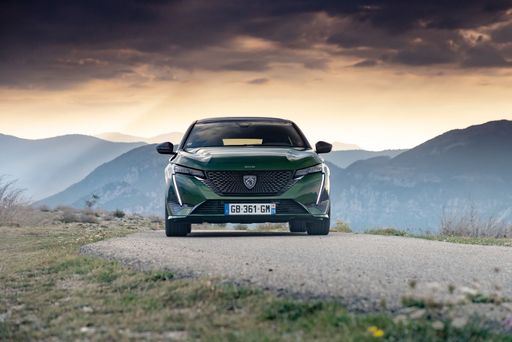 @ media.stellantis.com
@ media.stellantis.com
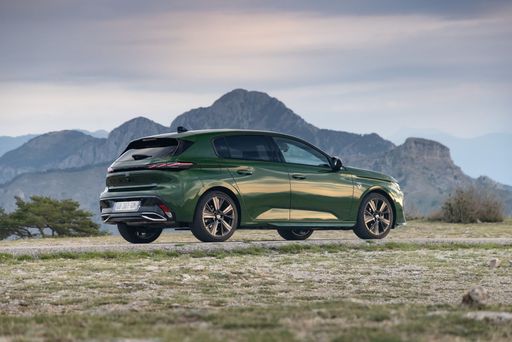 @ media.stellantis.com
@ media.stellantis.com
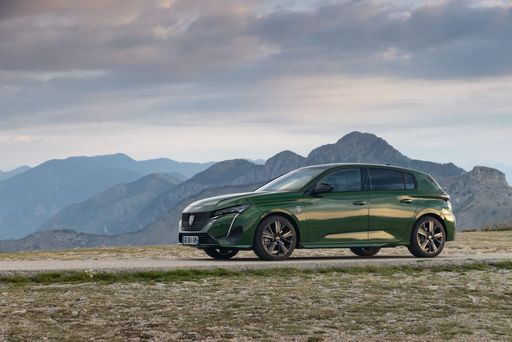 @ media.stellantis.com
@ media.stellantis.com
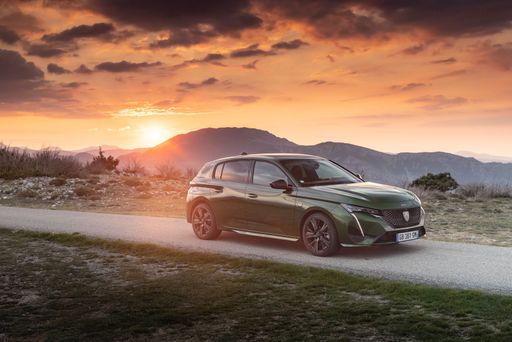 @ media.stellantis.com
@ media.stellantis.com
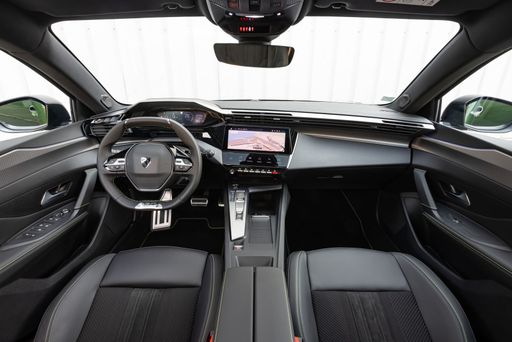 @ media.stellantis.com
@ media.stellantis.com
DS Automobiles N°4
The DS Automobiles N°4 showcases French elegance and innovation at its finest, blending luxury and cutting-edge technology seamlessly. This model is distinguished by its sophisticated design and attention to detail, offering a driving experience that resonates with both performance enthusiasts and lovers of style. As a hallmark of DS Automobiles' commitment to excellence, the N°4 continues to redefine what it means to drive a luxury vehicle, providing comfort and dynamic performance in equal measure.
details

|
|
|
|
|
Costs and Consumption |
|
|---|---|
|
Price
29200 - 41800 £
|
Price
33100 - 47100 £
|
|
Consumption L/100km
0.8 - 5.1 L
|
Consumption L/100km
3 - 5.2 L
|
|
Consumption kWh/100km
15.20 kWh
|
Consumption kWh/100km
15 kWh
|
|
Electric Range
78 - 419 km
|
Electric Range
77 - 449 km
|
|
Battery Capacity
51 kWh
|
Battery Capacity
14.6 - 58.3 kWh
|
|
co2
0 - 133 g/km
|
co2
0 - 116 g/km
|
|
Fuel tank capacity
42 - 53 L
|
Fuel tank capacity
40 - 52 L
|
Dimensions and Body |
|
|---|---|
|
Body Type
Hatchback
|
Body Type
Hatchback
|
|
Seats
5
|
Seats
5
|
|
Doors
5
|
Doors
5
|
|
Curb weight
1436 - 1759 kg
|
Curb weight
1463 - 1792 kg
|
|
Trunk capacity
314 - 412 L
|
Trunk capacity
360 - 430 L
|
|
Length
4367 mm
|
Length
4400 mm
|
|
Width
1852 mm
|
Width
1830 mm
|
|
Height
1441 mm
|
Height
1470 mm
|
|
Max trunk capacity
1258 - 1323 L
|
Max trunk capacity
1190 - 1240 L
|
|
Payload
431 - 510 kg
|
Payload
458 - 542 kg
|
Engine and Performance |
|
|---|---|
|
Engine Type
Diesel, Electric, Petrol MHEV, Plugin Hybrid
|
Engine Type
Petrol MHEV, Plugin Hybrid, Electric
|
|
Transmission
Automatic
|
Transmission
Automatic
|
|
Transmission Detail
Automatic Gearbox, Reduction Gearbox, Dual-Clutch Automatic
|
Transmission Detail
Dual-Clutch Automatic, Reduction Gearbox
|
|
Drive Type
Front-Wheel Drive
|
Drive Type
Front-Wheel Drive
|
|
Power HP
130 - 195 HP
|
Power HP
136 - 224 HP
|
|
Acceleration 0-100km/h
7.6 - 10.6 s
|
Acceleration 0-100km/h
7.1 - 9.5 s
|
|
Max Speed
170 - 225 km/h
|
Max Speed
160 - 233 km/h
|
|
Torque
230 - 300 Nm
|
Torque
230 - 360 Nm
|
|
Number of Cylinders
3 - 4
|
Number of Cylinders
3 - 4
|
|
Power kW
96 - 144 kW
|
Power kW
107 - 165 kW
|
|
Engine capacity
1199 - 1598 cm3
|
Engine capacity
1199 - 1598 cm3
|
General |
|
|---|---|
|
Model Year
2023 - 2025
|
Model Year
2025
|
|
CO2 Efficiency Class
D, A, C, B
|
CO2 Efficiency Class
D, B, A
|
|
Brand
Peugeot
|
Brand
DS Automobiles
|
Is the Peugeot 308 offered with different drivetrains?
Available configurations include Front-Wheel Drive.
The prices and data displayed are estimates based on German list prices and may vary by country. This information is not legally binding.
